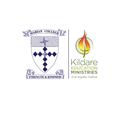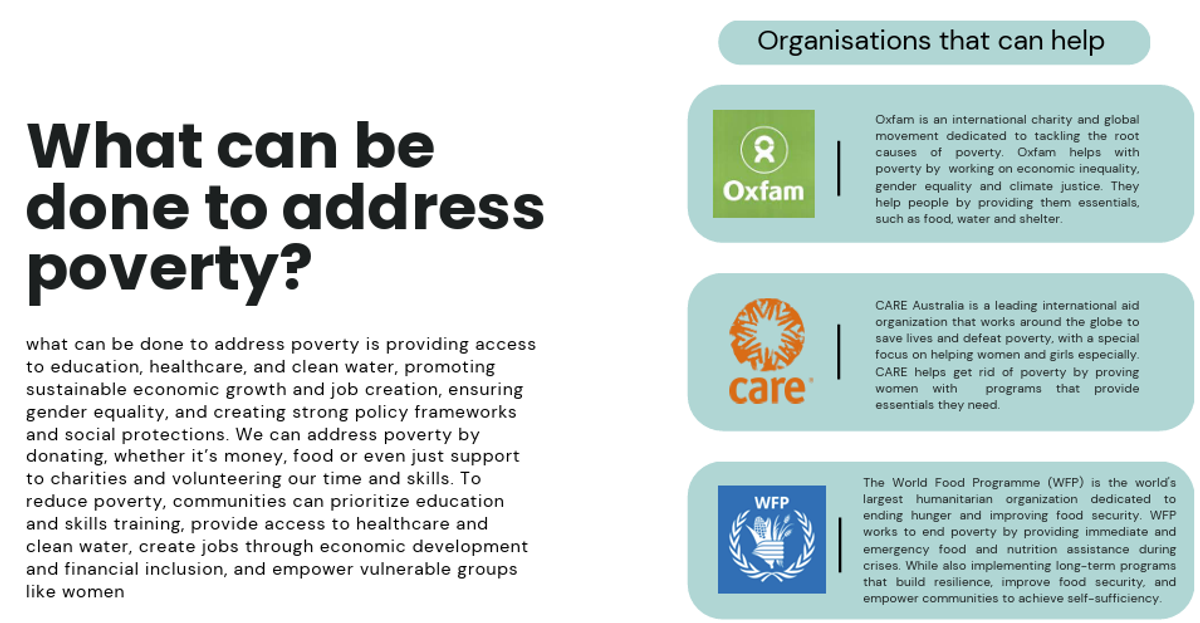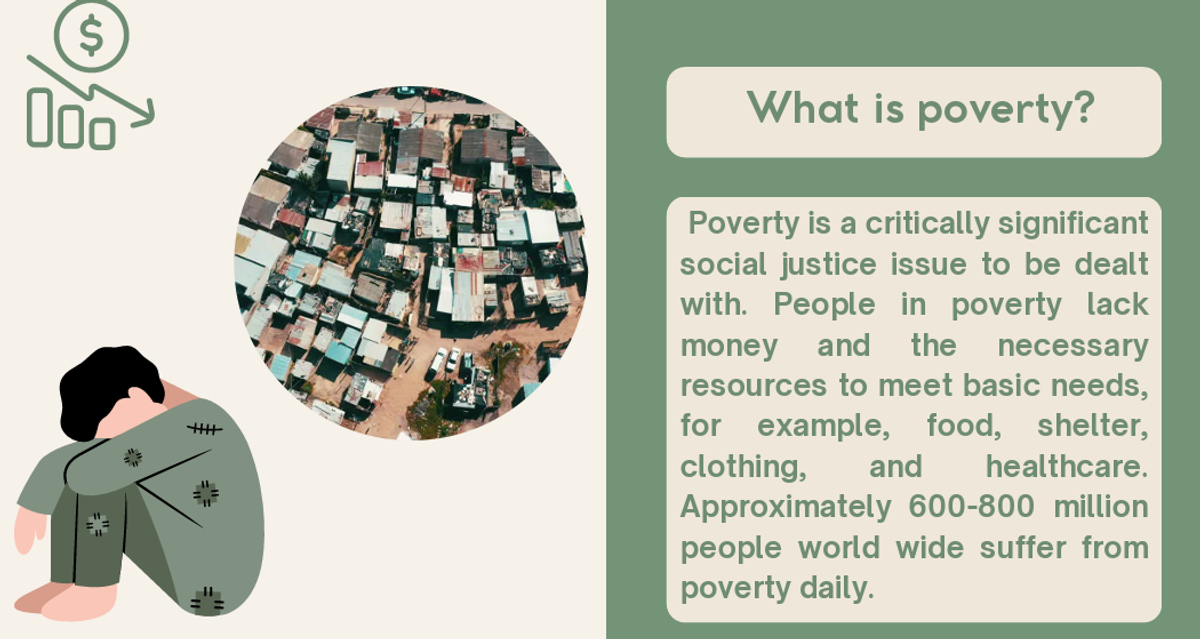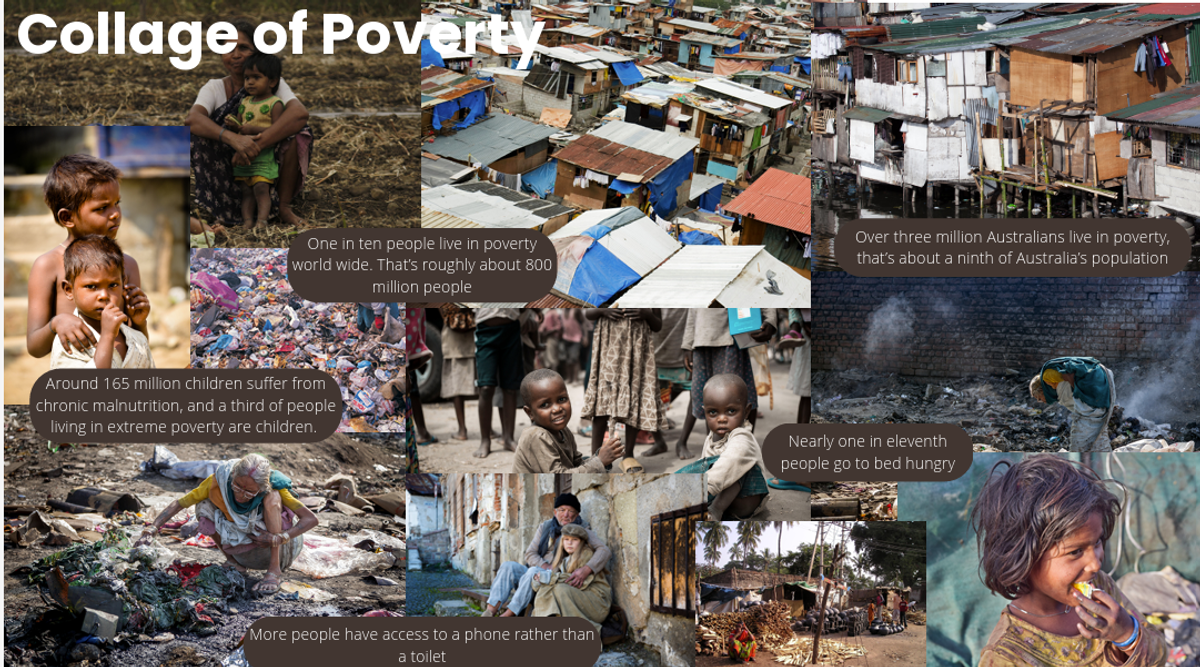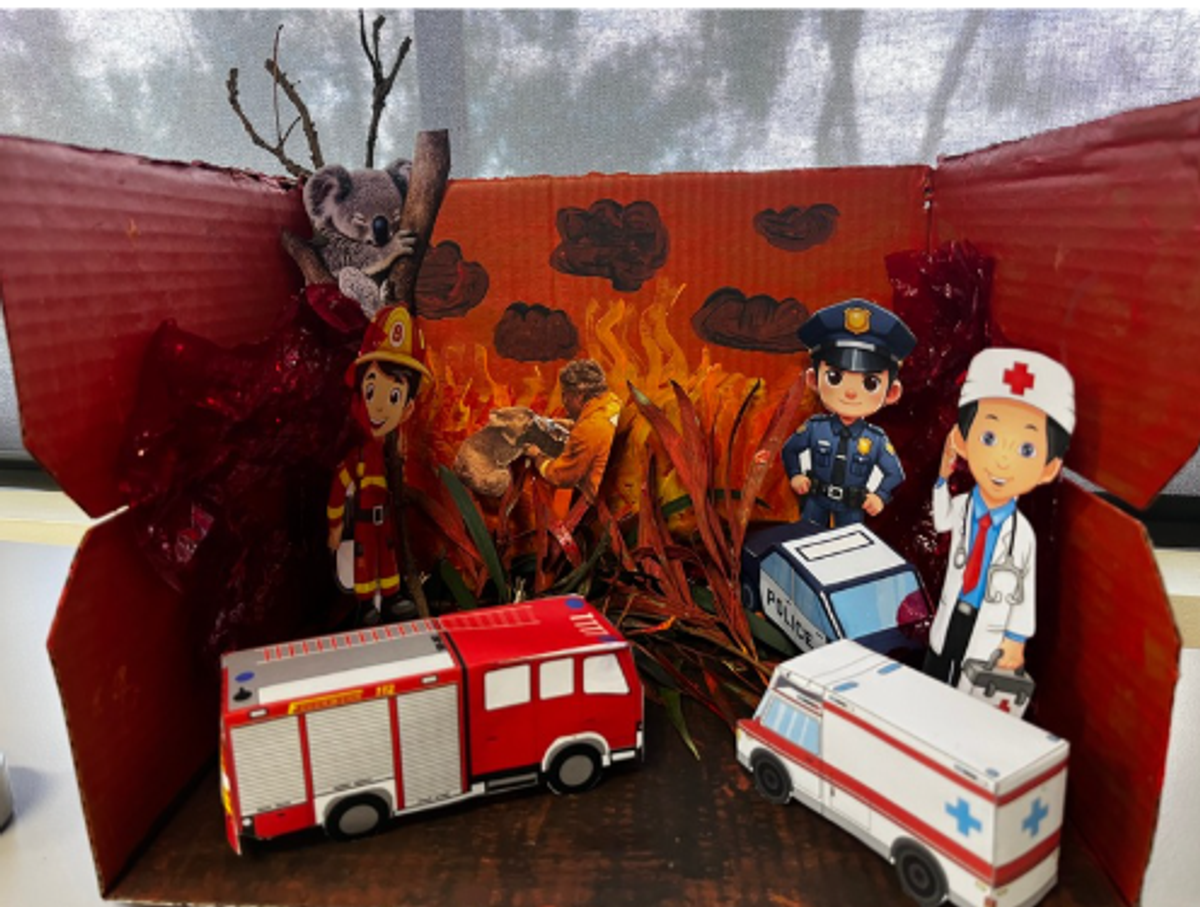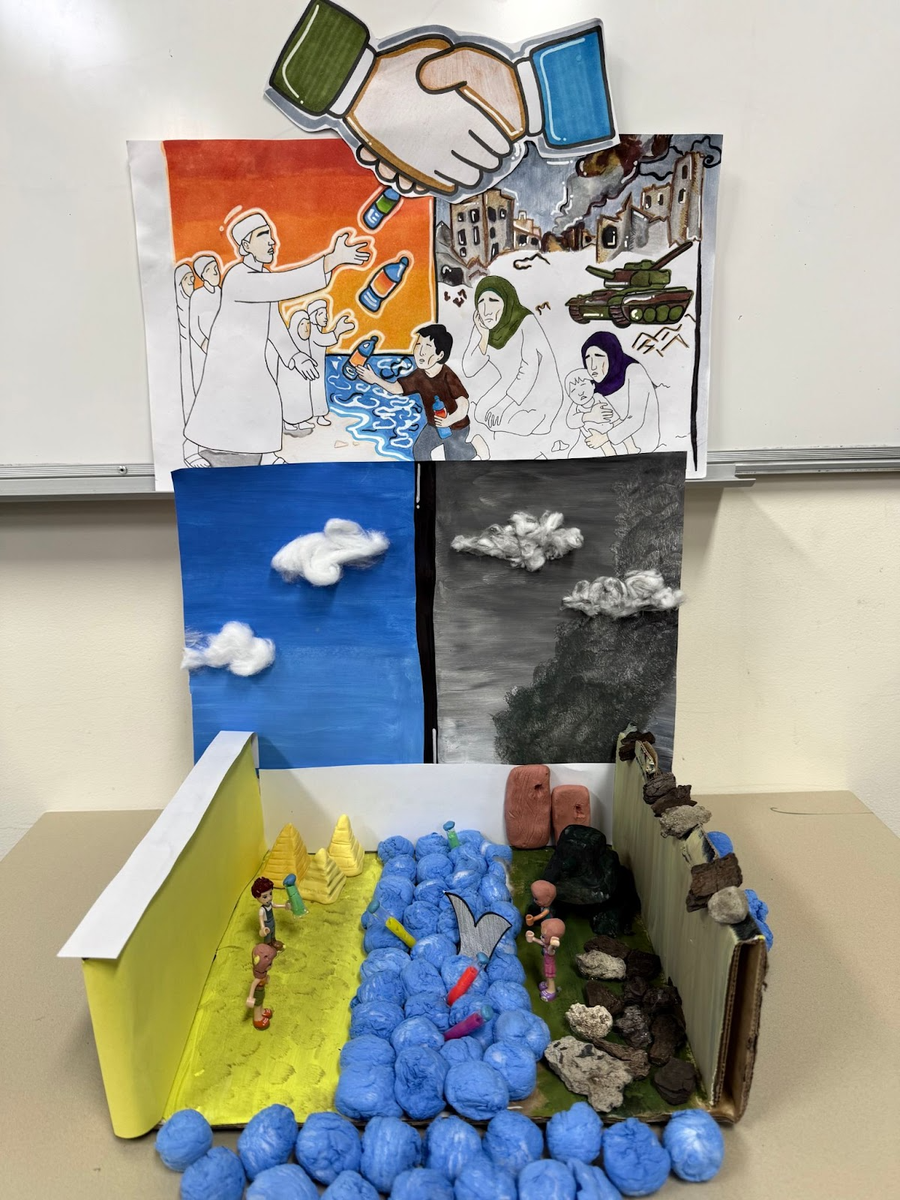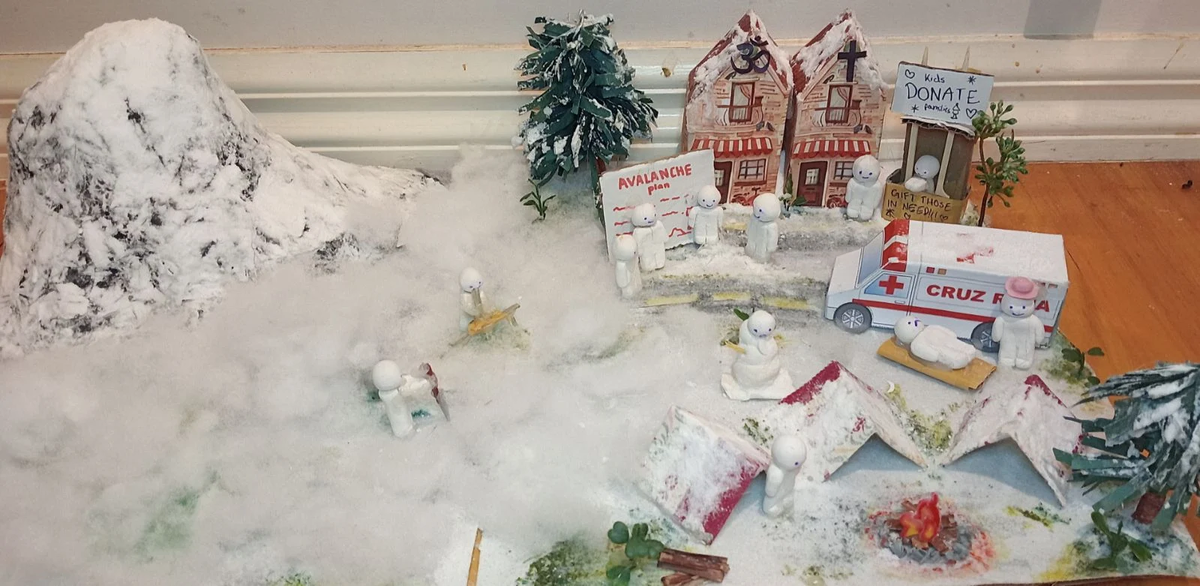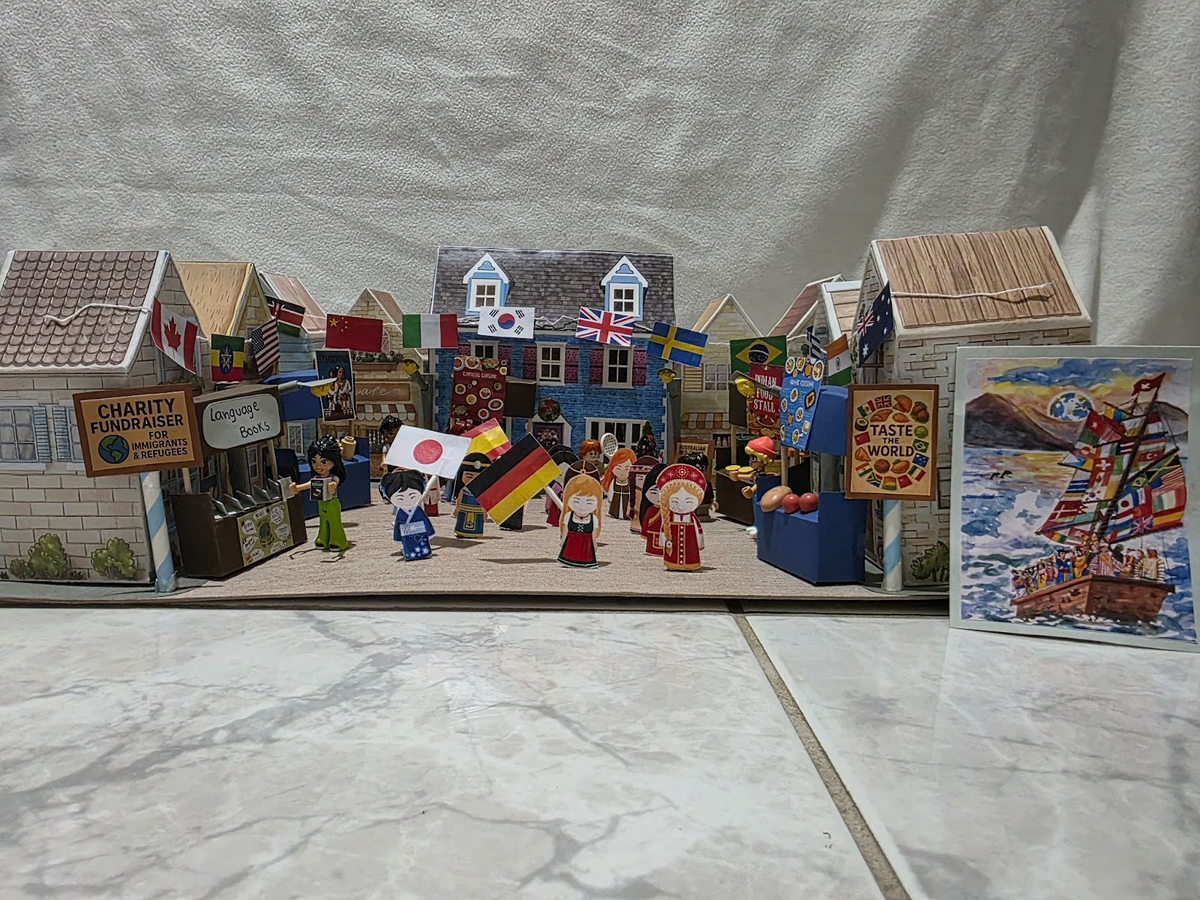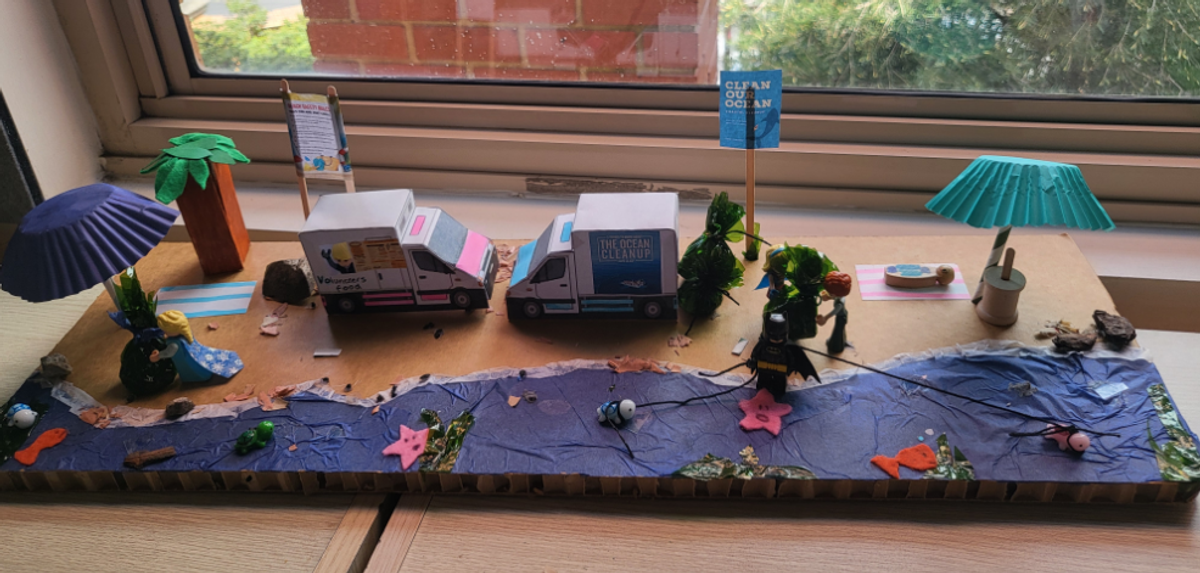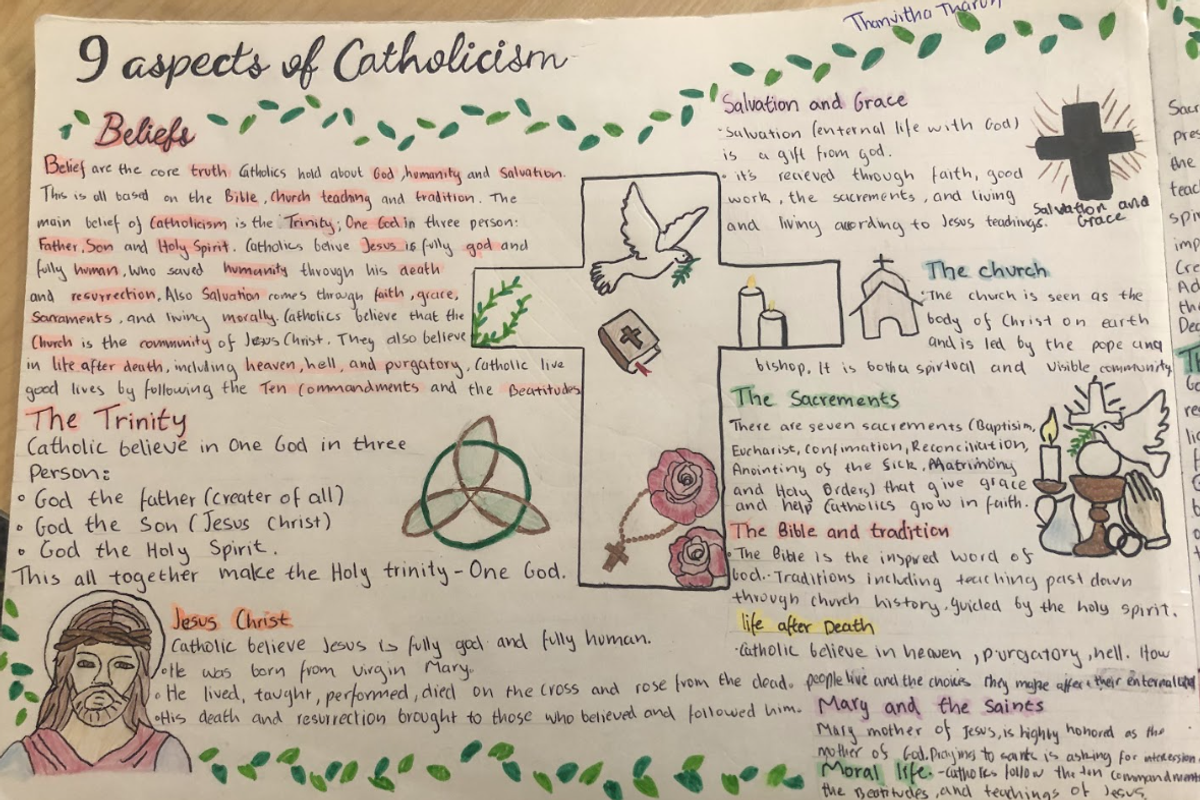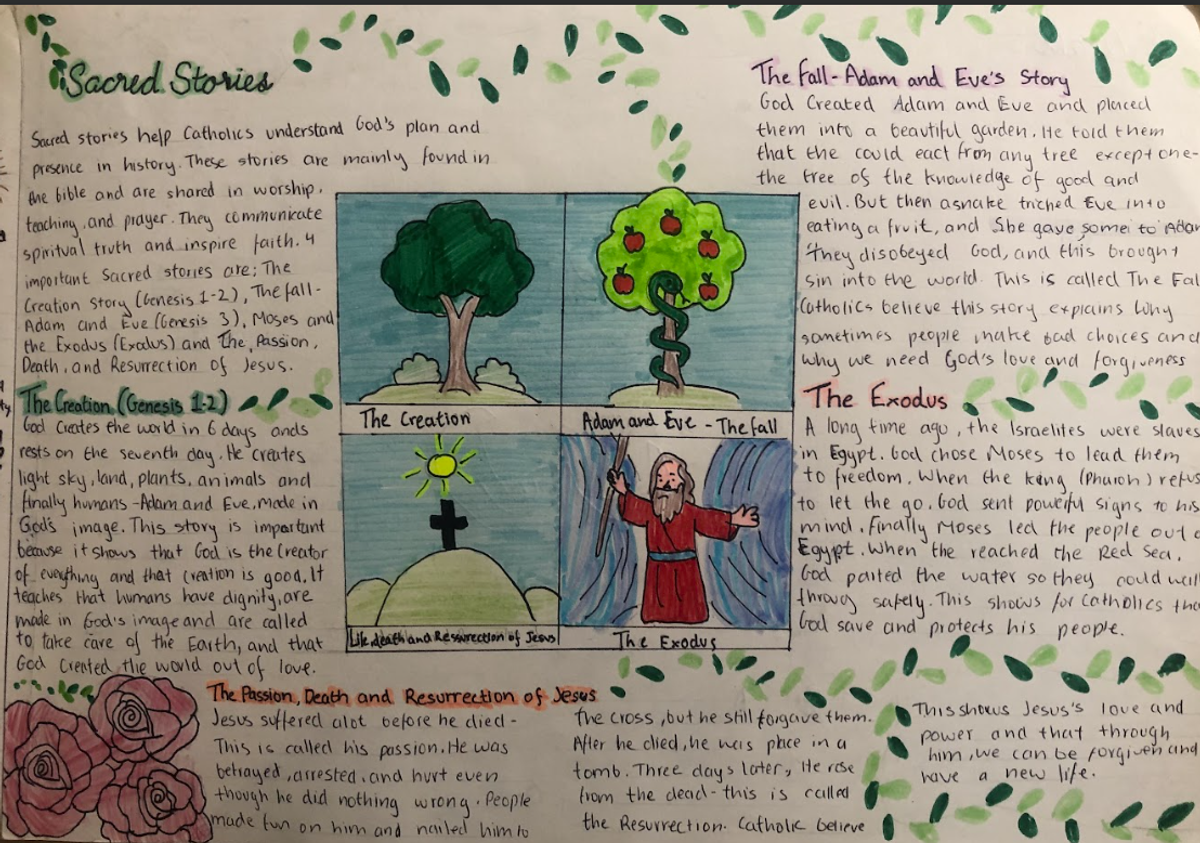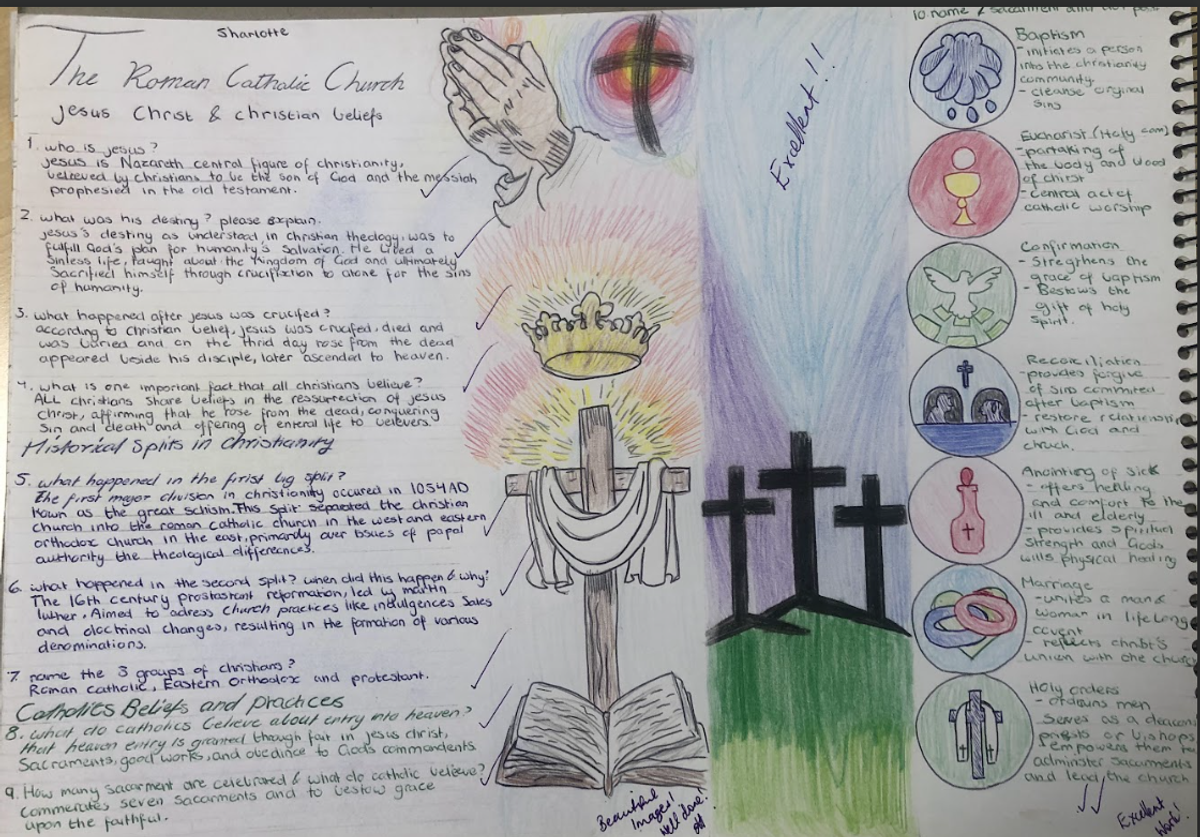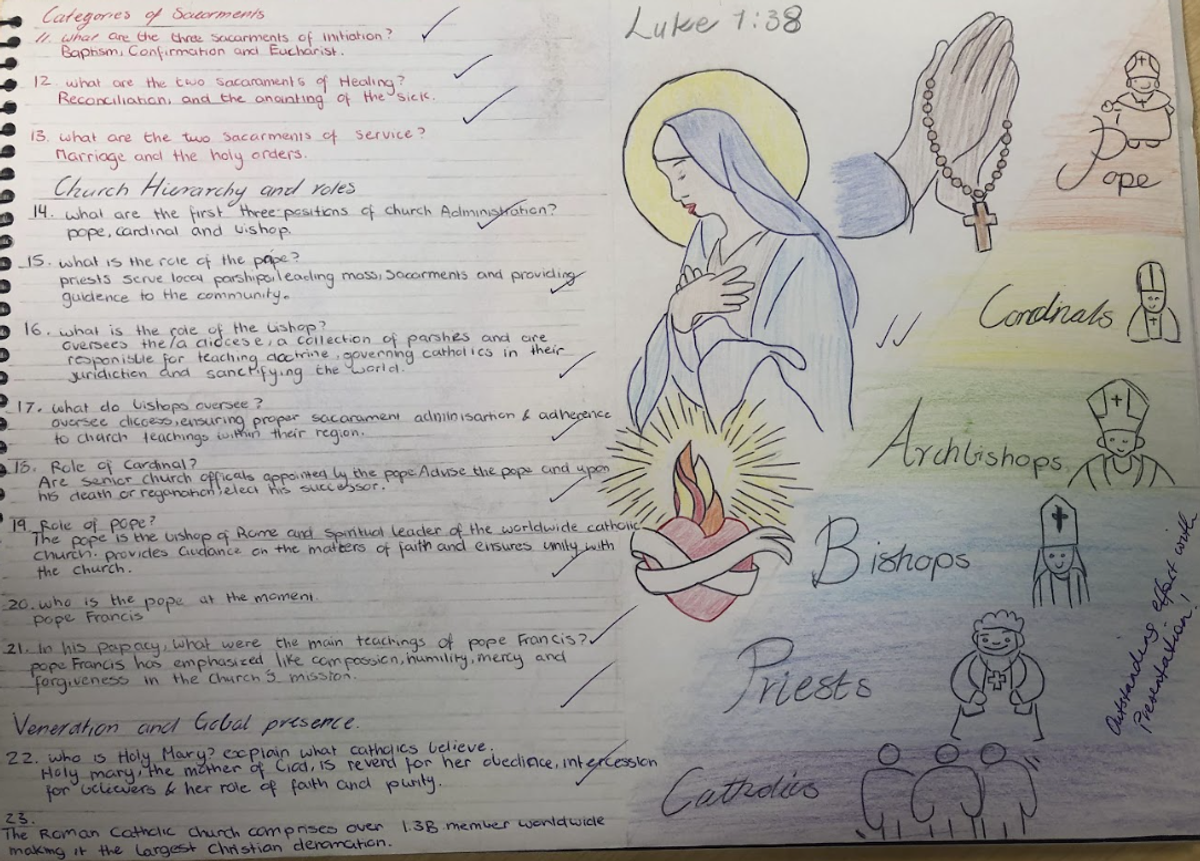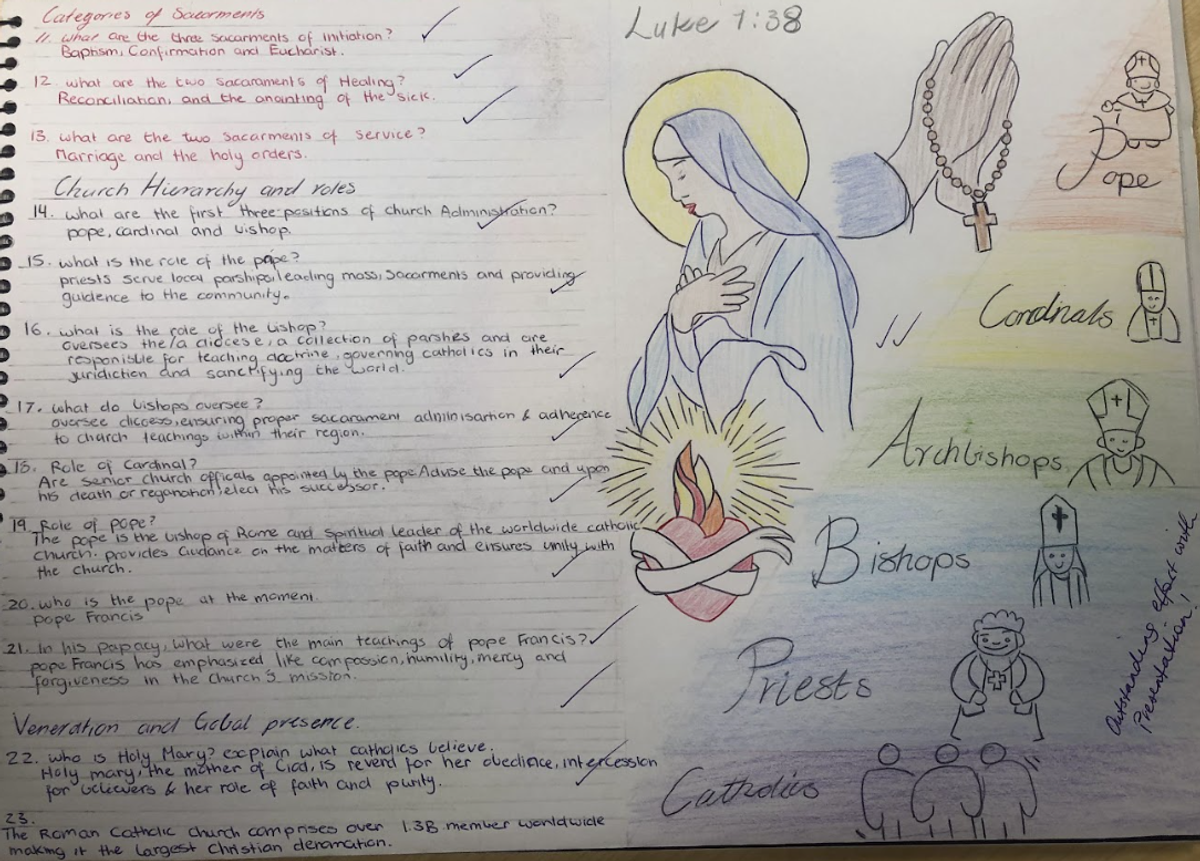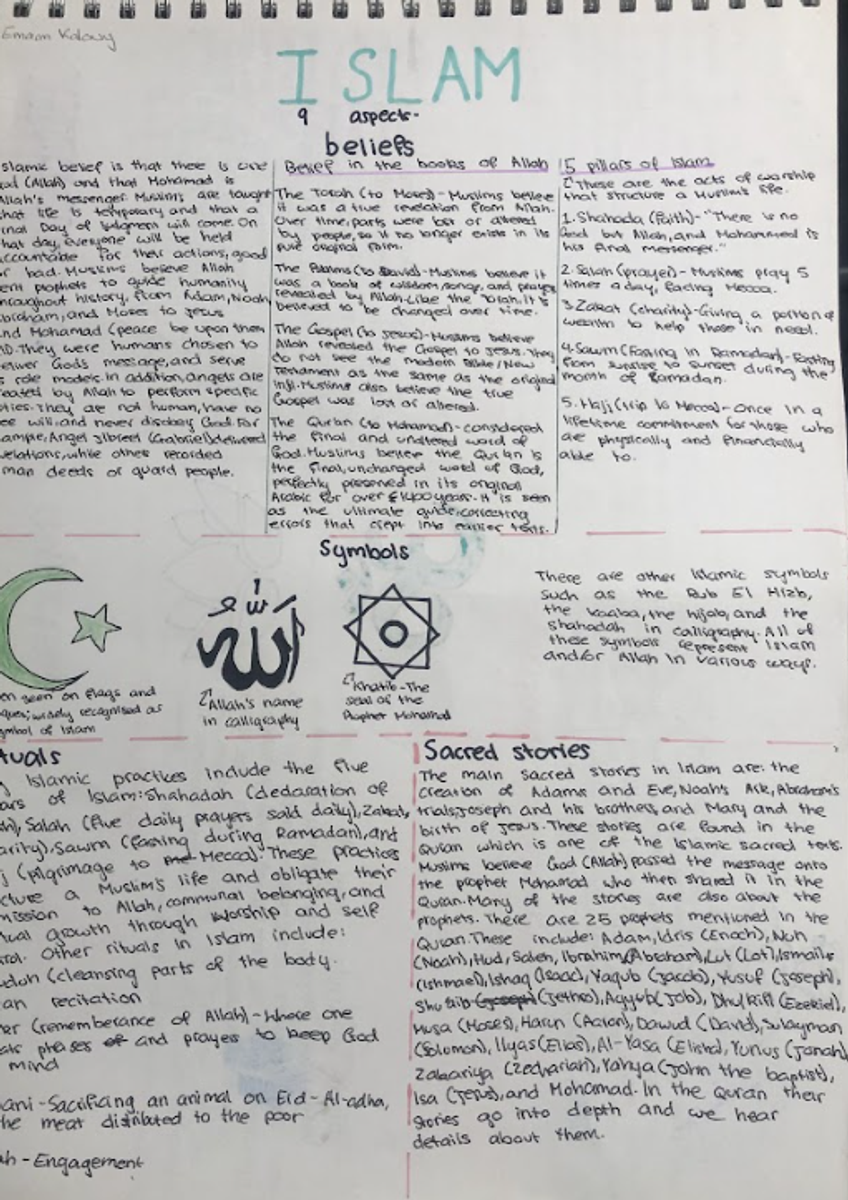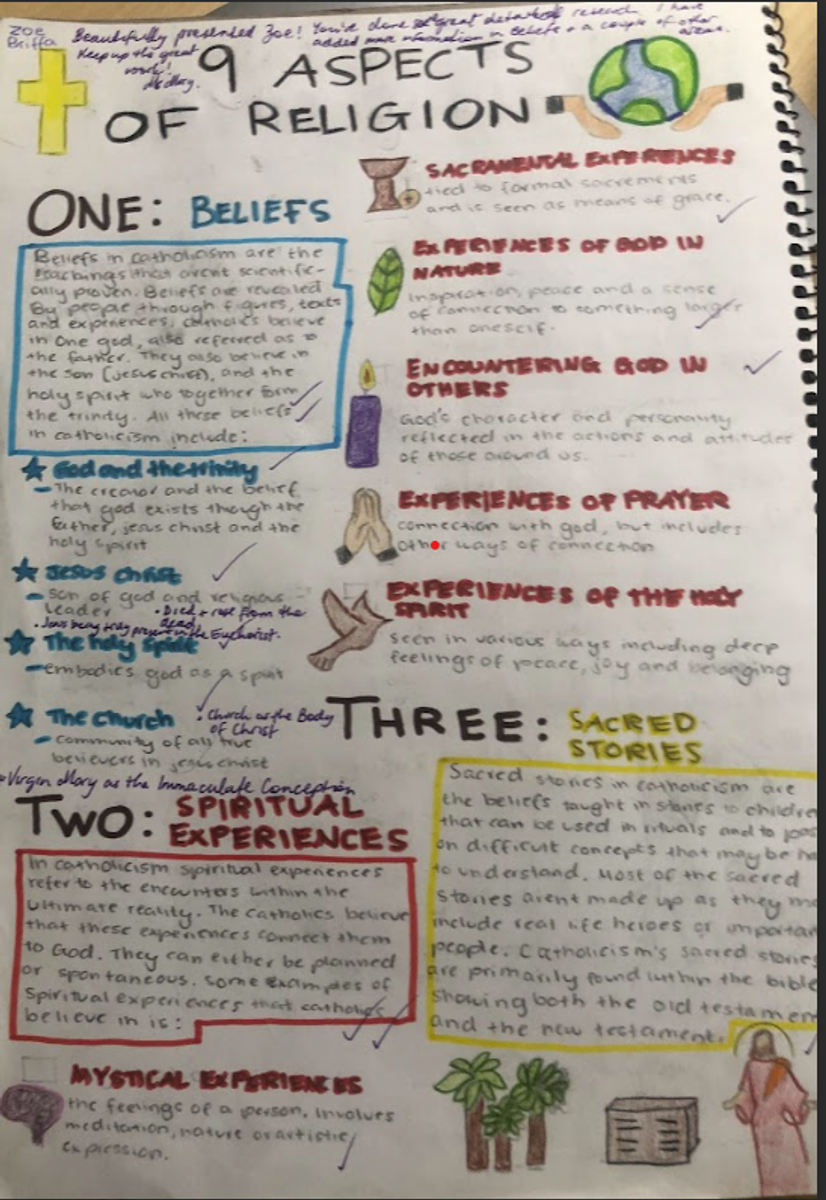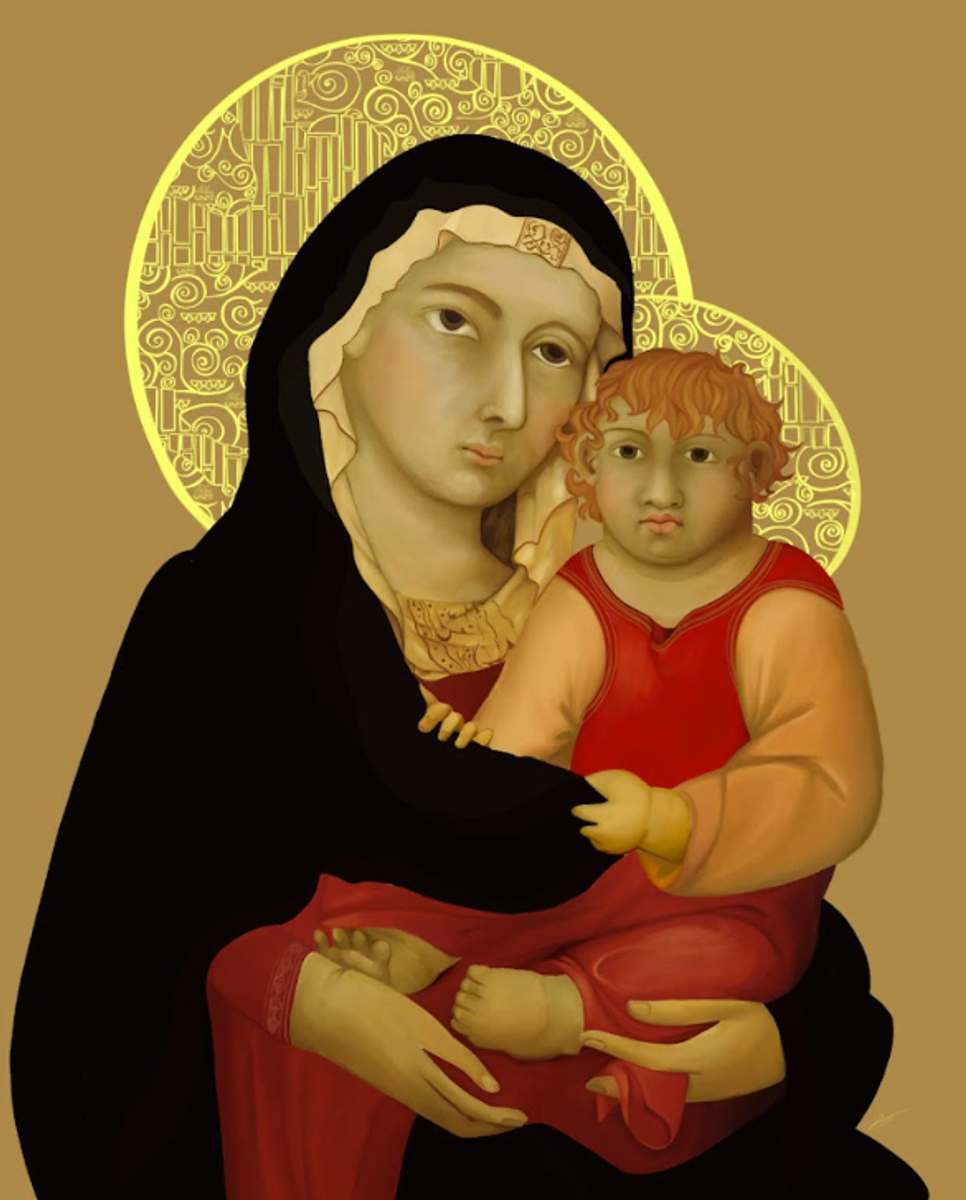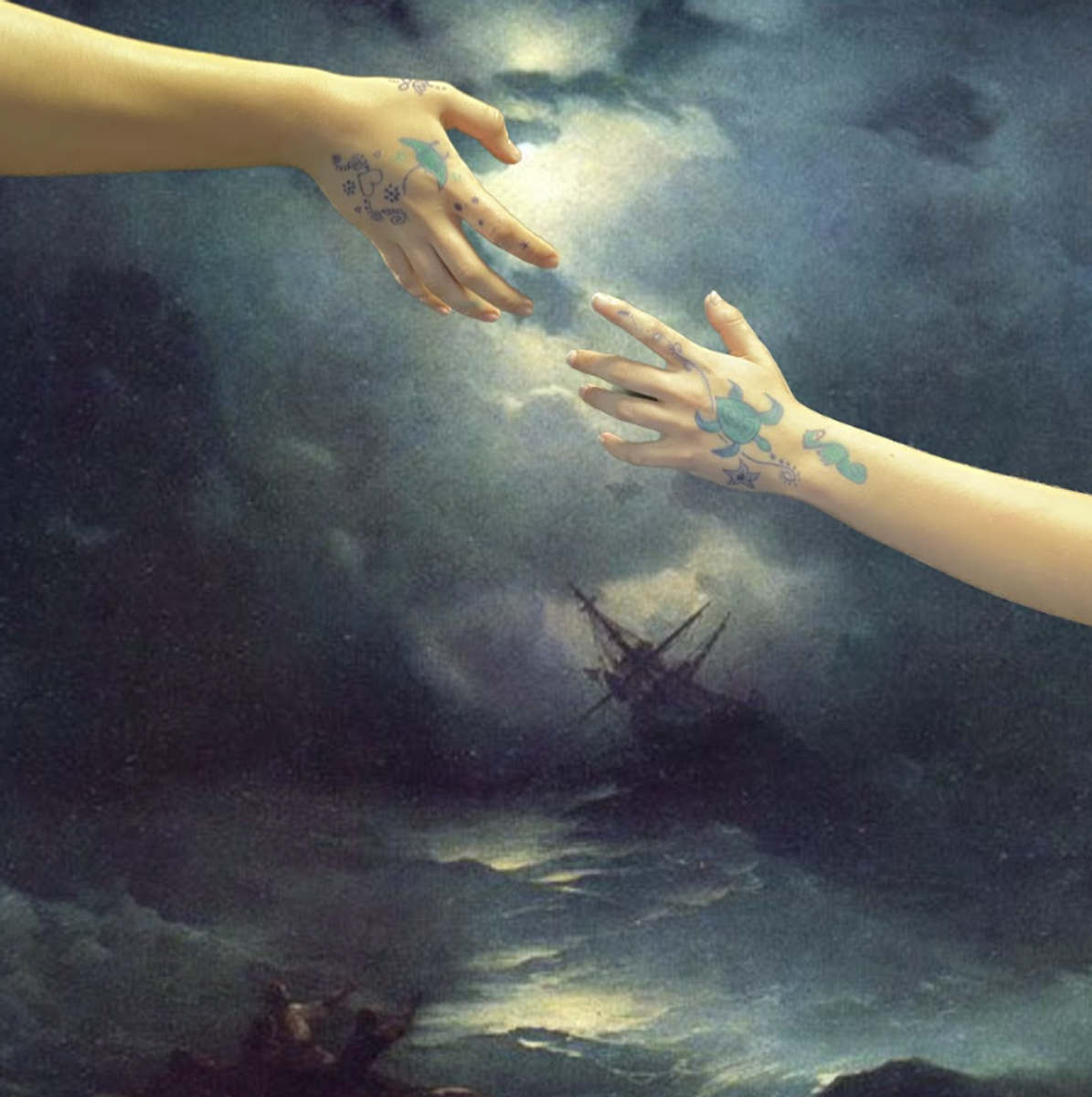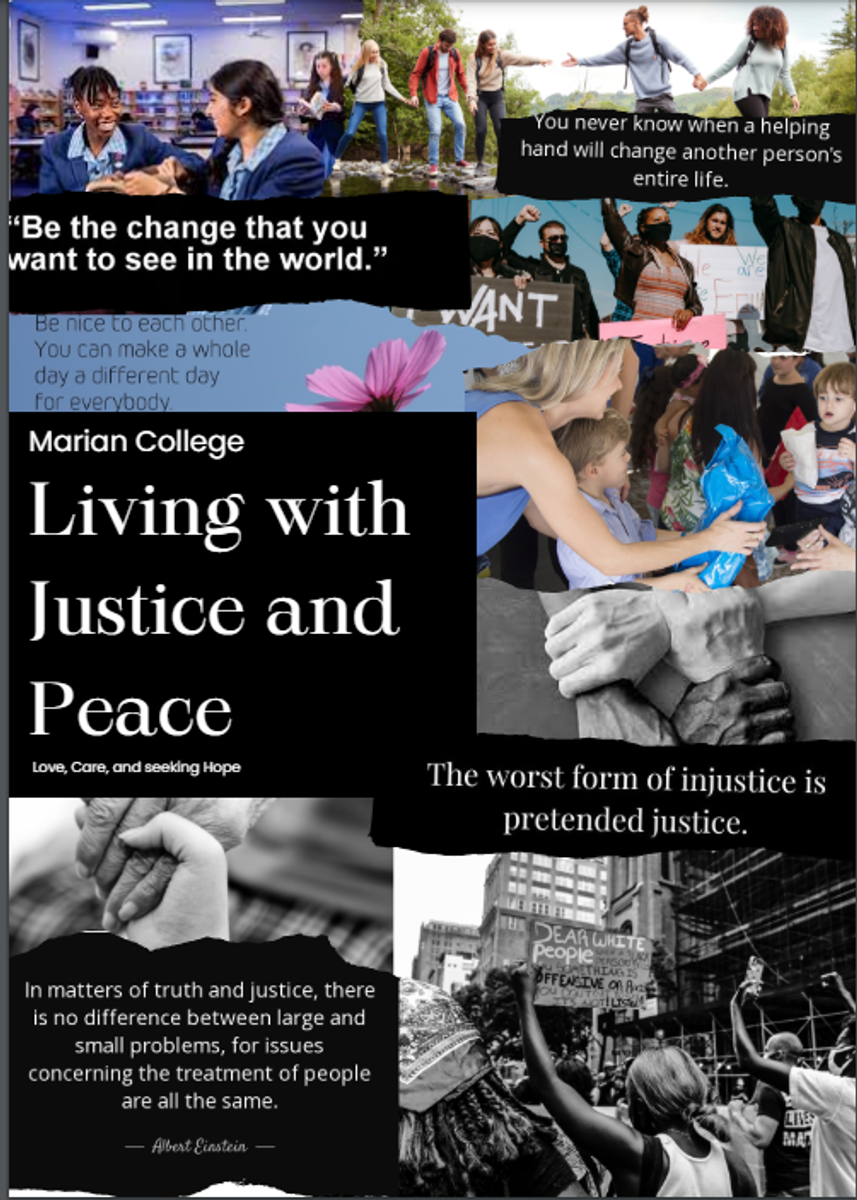Religious Education
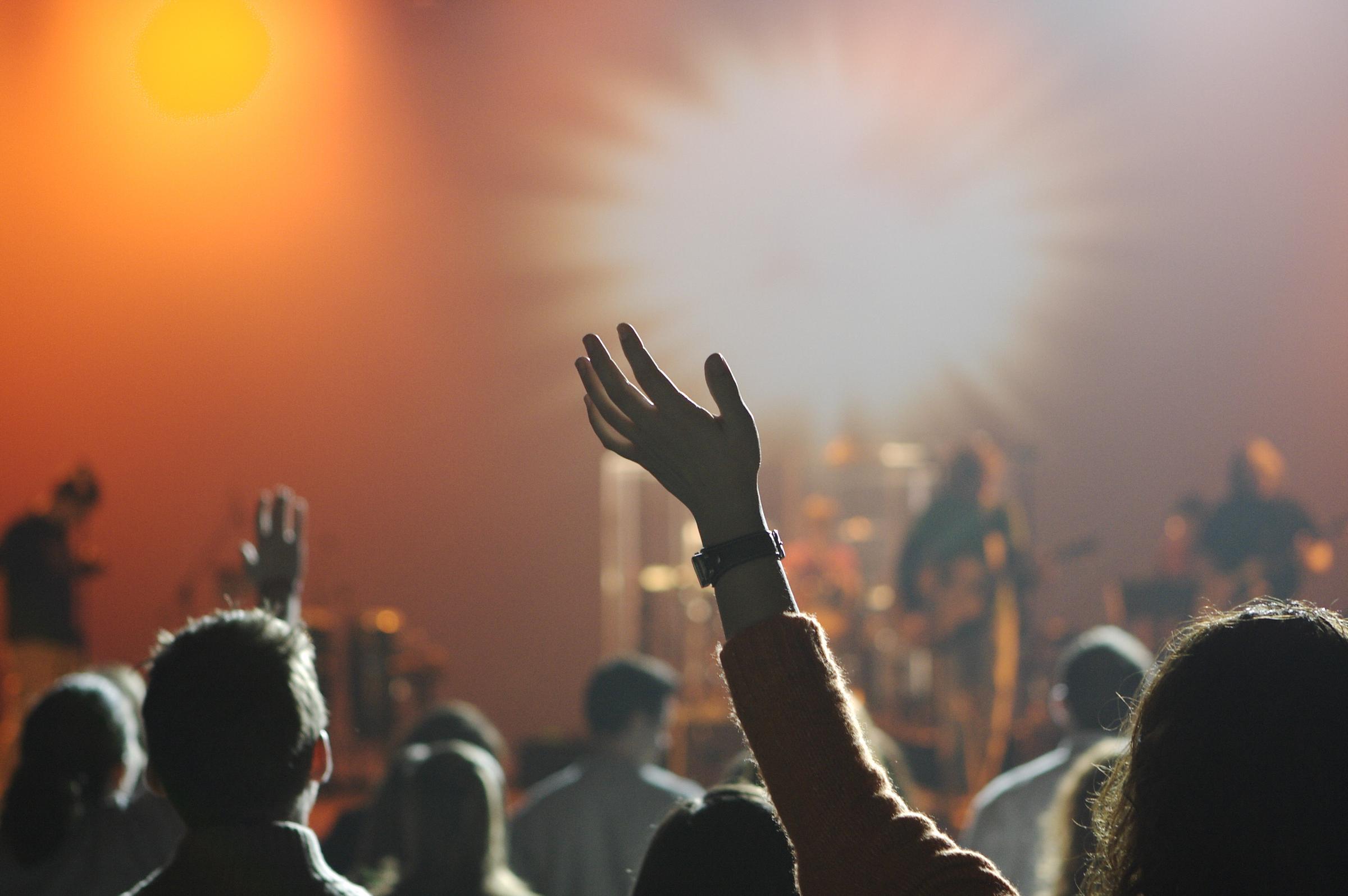
Year 7 Religious Education
In Term 3 students examined issues related to social justice and reflected on the call we have as Christians to act justly. They were introduced to the Declaration of the Rights of the Child and completed a Dollar Street Task where they explored how families around the world live. Students completed a Case Study on a child whose rights were broken through lack of freedom. They completed research on people or groups who face injustice and created their own artistic interpretation of that social justice issue.
Year 8 Religious Education
The Year 8 students have been learning about Communities this Term and have explored the key characteristics of an effective community and how they contribute to the success of the community. With a partner the students have made Community Snapshots of an event or disaster that brings various elements of the community together. They have learnt that we are created in God's image to live peacefully with others in the Community. A sense of belonging is an important part of being within a community and with this comes responsibilities that help us maintain a just and safe community for all.
Here are some Community Snapshots that the students created:
Summary:
This diorama which has been inspired and influenced by the Australian Bushfires in 2019, shows the effectiveness of a community. It features key people such as frontline workers like, a police officer, a firefighter, a doctor/vet and a volunteer, who all play a major role in recovering from this disaster. Their cooperative efforts all tie into achieving a safer environment, and also showing how powerful working as a community can be. By each of them playing their role they are all able to combine their knowledge and dedication together to achieve something big. It shows the real effectiveness of a community and how everyone has an impact when working together to achieve a specific goal. (By Atnassia Haile & Seini Fatai)
This is me and my group’s final product. As you can see we have also created a drawing symbolising what's happening in the diorama. We have shown solidarity, unity and hope as our main message to convey to the audience. At the very top I have pasted a handshake which shows unity and emphasizes the importance of cooperation and peace building.
This symbol of unity and cooperation is the central idea that ties our entire piece together. It shows that when people choose to work together the world becomes a more safer and trusting place. We have also shown a contrast between the Egyptian sky and the Palestinian sky. On the palestinian side, we have painted the sky as dark, gloomy, and in dark shades.
It isn't just a representation of their reality; it's a visual metaphor for the deep grief, pain, and hardship they are enduring. On the Egyptian side, the sky is clear and blue, which shows just how much the Palestinians are going through in contrast. Contrary to the Palestinian side, the Egyptian side represents not only a different situation but also the openness and unwavering willingness of the Egyptian people to offer support and hope to those who are vulnerable and in need of a helping hand.
Me and my group thought that this would be a very powerful message because it shows two different situations, but also how one side can reach out and support the other when the other needs it. Overall, we wanted our diorama to send a message that even in dark times there can still be hope if people, no matter their differences, put in the effort to work together. By showing the handshake, the different skies, and our theme of solidarity, we wanted the audience to understand just how important unity and peace are for building a better future for us and the ongoing generations. (By Dhanvi Sharma, Denise Nguyen, Alyssa Vergara)
This diorama illustrates the theme of community through the story of a small, diverse village combining their efforts with people outside of their community to be able to respond to the recent avalanche. The scene captures the moments after the disaster, showing how people in the village and others from different places come together to support one another in a time of need. It illustrates how a small, diverse village, united by different values and beliefs, comes together to face a common challenge. From clearing snow and ensuring warmth and safety for all, to raising funds for families and repairing damaged infrastructure, to caring for those who are sick or injured, the community works hand in hand. Together, they plan and act to restore their village, demonstrating resilience, compassion, and shared purpose.
The scene reflects many key values found in Catholic Social Teaching and Living Justice, Living Peace. It reminds us that true community is built not only through shared space, but through shared responsibility, care, and connection. In moments of hardship, this unity becomes a source of strength, healing, and justice. (By Amber Sharma, Jasmine Le, Varshini Marepally)
The overall snapshot presents a vibrant and inclusive community where people from diverse backgrounds come together to celebrate culture, support one another, and care for the environment. It features a cultural parade filled with joyful participants proudly sharing their traditions, alongside food stalls where immigrants prepare and sell dishes to raise funds for those in need. There is a language book stall that encourages learning and understanding of different cultures, while also raising donations for refugees and immigrants. A colorful mural, created collaboratively by community members, symbolizes unity and respect for all cultures. The snapshot also highlights sustainable practices, with a thriving farm cared for by local caretakers who grow crops and raise animals, some of which help supply the food stalls and support refugees. Additionally, individuals demonstrate environmental responsibility by properly sorting waste to protect natural resources. Through these interconnected scenes, the snapshot reflects core values such as inclusion, solidarity, care for creation, and preferential option for the poor, showing how a community can come together to create a welcoming, just, and sustainable environment where everyone feels valued and supported.
(By Kruthi Mysala & Heaven Mebrhatu)
In our diorama we have made a beach scene where the theme is pollution. The scene includes a beach where volunteers and Organisation workers have come together as a community to clean up the beach. Members of the community have volunteered their time to come out and clean up their local beach as well as help save their wildlife from getting endangered by pollution. In our diorama there are multiple people working effectively to get the job done such as collecting waste off the sand and cutting plastic off from around the turtle's necks. The Ocean cleanup truck also gives out supplies to the volunteers as well as conducting the cleanup event.
This snapshot reflects the catholic social teaching of solidarity, because solidarity is the unification of individuals that share a common interest. In this case the interest being caring for the environment and the wild life within the environment. In this snapshot we can see people working together to clean up the rubbish on the beach, because they all care for the environment and the current state it’s in. In this snapshot we have Anna and Wonderwoman working together as a team helping each other load the rubbish into the truck, which belongs to the clean up.
Healing creation is the idea of restoration and the mending of both the natural world and humanity. This diorama reflects this because it is about a community restoring their local beach and humans being collectively. Our diorama is a display of healing creation because the community is healing the beach by cleaning and caring for it, and the beach is the creation. And humanity is the people helping the animals.
(By Ella Preddy, Olivia Schuliga, Gisma Adam-Adel & Adut Majok)
Year 9/10 Wonderful & Diverse Beliefs
In Wonderful & Diverse Beliefs this term, students have been exploring the 9 Aspects of Faith for each of the world’s main religions. They have studied Catholicism, Sikhism, Hinduism, Islam, Buddhism, Judaism and Aboriginal Spiritual Beliefs. They have been working on creating visually appealing sketchbook pages for each religion, incorporating research and artistic creativity.
(By Thanvitha Tharun)
(By Sharlotte Patrice)
(By Ruby Tran) (By Emaan Kalouy) (By Zoe Briffa)
Year 9/10 Awaken the Spirit
During Term 3 of Awaken the Spirit, students have investigated the Spirituality of Ecology and the Environment. They have explored how Science and Faith interact to shape individual decisions that impact the environment, society, and future generations. Guided by Pope Francis’ encyclical Laudato Si’, the course challenges anthropocentric perspectives, emphasising that all living beings possess intrinsic value and reflect God’s creative love. As part of their Inquiry Project, students have examined the lives and scientific contributions of Catholic scientists, analysing how their scientific work intersected with and was influenced by their Catholic faith.
Year 9/10 Does the Bible Really Say That…?
This term, students have focused on developing their skills in engaging with Biblical scripture through the study of various literary devices and writing styles. As part of the ‘Bible Bookshelf’ activity, they identified biblical books and recorded their titles according to their placement in the Old or New Testament. In addition, they completed an assessment consisting of multiple choice questions, short answer responses, and a case study.
Students have also undertaken a Research Task in which they examined challenging Bible passages, focusing on the questions of what, how, and why. This process enabled them to investigate the historical and cultural background of the texts and to understand how these contexts shape their interpretation and meaning.
Year 11 RE Art
VCE Religion and Art students are currently exploring the connection between spirituality and artistic expression. They are researching Gustav Klimt as an inspiration, focusing on his connection to spirituality in his artwork. This can be seen through his use of symbolism, ornamentation, and subject matter that often moves beyond the physical world into the realm of the sacred and the eternal. Students are developing their own artworks based on personal beliefs and spiritual ideas, exploring subject matter such as identity, faith, and transformation. They are experimenting with materials and techniques, while developing their own visual style.
As part of the process, students are reflecting on their art practice through visual diaries, documenting research, creative decisions, and how their understanding of religion and art is developing.
Digital Artwork.
“Madonna and Child”
by Mia Marosy
Digital Artwork.
“Storm”
by Abigail Douglas
Year 12 Living Justice Living Peace
Opening Eyes, Opening Hearts: A Year of Learning in Living Justice and Living Peace
As another academic year draws to a close, it's time to reflect on the profound journey our students have undertaken in the Living Justice and Living Peace program. What began as classroom discussions has evolved into something far more meaningful – a deep awakening to global realities and a commitment to making a difference.
Confronting Hard Truths: Learning About Human Trafficking
In Term 3, our students bravely explored one of the world's most challenging issues: human trafficking and modern slavery. Through careful investigation and thoughtful discussion, they discovered that this isn't just a problem from history books – it's a crisis happening right now, affecting an estimated 50 million people worldwide.
The statistics were sobering, but what truly moved our students was understanding the human cost. They learned how vulnerable populations, particularly women and children, face exploitation that strips away their fundamental right to choose their own path in life. These aren't just numbers – they represent real people whose dreams and futures have been stolen.
From Awareness to Action
Perhaps the most inspiring aspect of this learning journey has been watching our students move beyond simply absorbing information. They didn't just learn about the problem – they began thinking critically about solutions. Class discussions buzzed with ideas about how they, as young people, could contribute to addressing this global crisis.
New Perspectives, Opened Eyes
"My eyes have been opened to a wider global issue that exists," shared one student, capturing the sentiment felt throughout the classroom. This awakening represents exactly what education should achieve – not just the transfer of knowledge, but the development of global citizens who understand their connection to the wider world.
The learning didn't stop at facts and figures. Students grappled with complex questions about justice, human dignity, and their own role in creating positive change. They discovered that being informed citizens means accepting responsibility for the world we share. This was a common theme across the whole of the year.
Dreams and Reflections
As the year concludes, students will have a special opportunity to reconnect with their earlier selves through letters they wrote about their goals and dreams at the beginning of the year. This reflective moment promises to be particularly poignant after a year of such profound learning about global challenges and personal responsibility.
Reading these letters will likely reveal how much they've grown – not just in knowledge, but in empathy, awareness, and commitment to justice. The dreams they wrote about months ago now exist alongside a deeper understanding of the world's complexities and their power to contribute to positive change.
A Foundation for the Future
The Living Justice and Living Peace program has given our students something invaluable: a foundation of awareness, empathy, and hope. They've learned that even the most daunting global challenges can be addressed when people care enough to act.
As these young people continue their educational journeys and move into the world as adults, they carry with them not just academic knowledge, but a commitment to justice and peace that will shape their choices for years to come.
This has indeed been a wonderful year of learning – one that has prepared our students not just for tests and grades, but for lives of meaning, purpose, and positive impact. In a world that desperately needs compassionate, informed citizens, our Living Justice and Living Peace students are ready to make their mark.
The Living Justice and Living Peace program continues to demonstrate that when we trust young people with important topics and encourage them to think critically about global issues, they rise to the challenge with wisdom, compassion, and determination that gives us all hope for the future.
